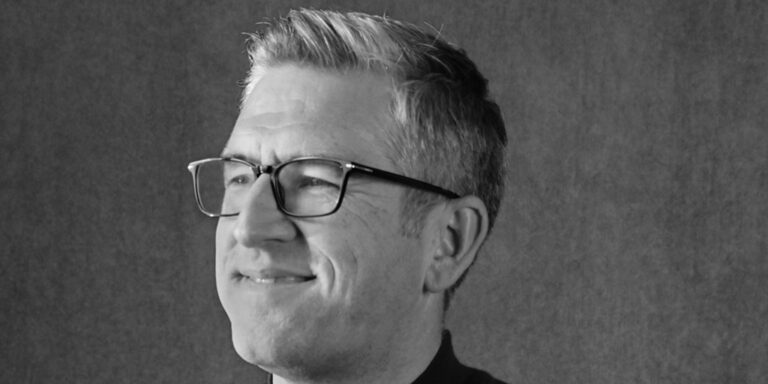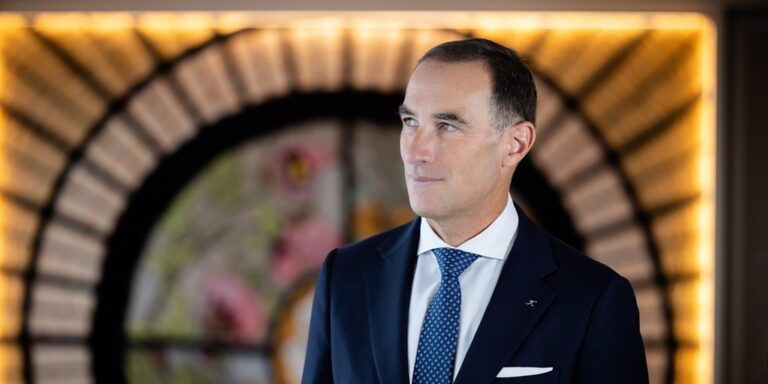Therefore THP News questioned Rani Gharbie on how he will help the company to further accelerate its growth.
What is your mission in your new role as citizenM’s head of investment and development in the Americas?
citizenM is an asset-heavy hotel investor, developer, and owner-operator. The company opened its first property in 2008 and has 41 hotels in the portfolio between existing properties and those in the pipeline, with half of that number in the Americas. Since opening its first US property in 2014, citizenM New York Times Square, citizenM has been on a very solid growth trajectory in the Americas (even launching new hotels in new markets during the pandemic); my mission is to accelerate that growth trajectory and help take citizenM’s expansion to the next level. Right out of the gate, we’re adopting a proactive approach to this next phase of the rollout and our team is actively pursuing new investment and development opportunities in our target markets. We’re agile, well-capitalised, and motivated to identify deals. When we see the right opportunity, we can move on it.
What is the brand’s current hotel pipeline and how are you looking to progress this?
We have a very robust pipeline at the moment. We’re opening hotels in new markets like Silicon Valley and Austin within the next several months, and in 2024 we will debut a second Boston property, and a third Miami location. Looking down the road a bit, we’ve got projects in the works in the Mid-Atlantic, the South and Southeast, as well as the West Coast. Some of these will be our first entries into a particular city or region, and others will be our second or even third hotels in a given city. This blend of adding properties in strong markets where we’re already active, while also launching in new markets, is an important part of our strategy. My aim is to progress this strategy through a mix of sourcing investment opportunities and putting together strategic partnerships.
Which US or Canadian regions do you think hold the most potential for additional citizenM sites?
There is a lot of untapped potential for citizenM in urban core locations across the US. In terms of new markets, we’re excited about opportunities in the South, the Southeast, in the mountain states and on the West Coast. We also think there is strong potential for additional citizenM sites in Los Angeles and Chicago, and of course we’re always on the lookout for opportunities to expand in core Northeast markets like New York, where we already own two properties. Major Canadian cities, especially Toronto, Vancouver and Montreal are very compelling for us as well, because they have that ideal blend of factors we look for in all potential development markets: they are cosmopolitan, exciting cities with robust development growth, a broad array of demand drivers, and a demonstrable business and leisure travel crossover with other citizenM markets.
How easy or difficult is it to attract investors for citizenM projects?
We’re a substantial and stable investment entity on our own, with over US$2 billion of hotel assets under management. However, we are open to asset level joint ventures or other creative structures with potential partners that will be accretive to the investment proposition. I think for potential partners who understand the lodging industry and who also understand citizenM’s brand and investment model, it’s clear that we bring an exceptional level of value and risk-adjusted returns to the table. Our efficient hotel programming and super lean tech-forward operating model combine to generate some of the best returns per square foot/metre that we’ve witnessed in our industry.
When we work with a development partner on a new hotel within a mixed-use development, for example, we are prepared to look at a forward-sale scenario of the hotel portion upon completion — this is what we did with Sterling Bay in Chicago. We’re also considering JV partnerships with local and national entities on some new opportunities, where citizenM would invest alongside those partners in the underlying real estate, and where citizenM will also operate the hotels under our brand name.
Are you intending to focus on new builds or conversions?
Whether we pursue a new build or a conversion really depends on the context. Historically, much of citizenM’s growth in the US has been through new construction. To some extent, that’s a function of programmatic needs as well as the realities of markets where we’ve been growing up to this point. Looking forward to the next couple of years, though, we anticipate there may be a growing number of stressed properties that present compelling conversion opportunities. If the right asset at the right basis with the right programme comes up for sale or for co-investment in one of our target markets, we will definitely consider it for a conversion. This is one of our prime motivations in seeking out strategic partnerships, because there is no-one better than local experts on the ground in these cities to source off-market opportunities we couldn’t know about on our own.
What will be your main criteria when considering acquisitions and creating partnerships?
Because citizenM has the capacity to source land and develop assets independently, we need to be very analytic and diligent in considering any potential acquisition site or property. Assuming that a city meets our criteria for demand drivers and other key characteristics in the first place, there’s a lot of due diligence we need to carry out. As every hotel developer knows about starting a new project in a target market city, being in exactly the right location can make the difference between a winning property and one that struggles to succeed. In some cases, we have our own expert development and investment leaders on the ground within a region, and they can undertake that analysis because of their own deep local knowledge. In other cases, that level of insight is a motivating factor in seeking out partnerships.
We have to be rigorous in evaluating these opportunities, too. What kind of development and investment track record does the potential partner have? Have they entered into co-developments or joint ventures before? How well do they really know this market and the hotel asset class? Is there an alignment of culture and chemistry that will carry us through the next five to 10 years? Our goal is for any collaboration to truly benefit all parties. We’ve succeeded with this mindset many times, but it takes a lot of work and focus.
Do you see citizenM branching out from the urban affordable luxury hotel segment?
One of the key strategic points that has made citizenM successful is that we know our customers: we listen to them, we engage with them, and we make sure that we’re responsive to what we hear. In practice, this means we need to be where our customers are, which might entail expanding our geographic focus a bit. For instance, we see corporate campuses and similar settings as a valuable potential growth market. Given the realities of a remote-hybrid work world, our loyal guests who stay with us in New York or Chicago or Miami will want to stay with us when they travel to Silicon Valley for a quarterly onsite. We know there’s demand for our product outside of traditional city centres.
Do you think there would be any space within the group to launch any additional brands?
At citizenM, we do what we do very well because our brand has a very specific focus, and that becomes our value-add even as we keep evolving the brand to better meet our customers’ needs. From our perspective, the citizenM brand has a lot of room for growth in terms of our physical portfolio, and that’s where our energy is going. That said, we stay attuned to the real estate capital markets and are open to considering other business opportunities that may come our way outside our typical ‘buy box’.
Will your role encompass examining supplier partnerships, and if so, how are you looking to develop those?
My team collaborates very closely with our external project partners as well as citizenM’s own global design and construction teams. We’re always looking for ways to improve and value engineer the development, design, and construction process, and one of the benefits of citizenM’s development-owner-operator integration is that we can have a real impact on the different steps of that process. For example, we’ve been working closely with our global design team to develop a more streamlined kit-of-parts approach to our hotel rooms, with the aim of speeding construction and reducing development cost. Those are the kinds of real, measurable benefits our business model offers.
How do you think the citizenM portfolio will look in 5 years’ time?
We already have a significant global presence, with 41 hotels operational and under construction, including 19 properties in the US between existing and those in the pipeline. Many of those are nearing completion, so even by the end of next year our portfolio will be significantly broader and more diverse than it is right now. In five years? It’s going to be very exciting. Right now, we’re building a substantial framework in the Americas, and the pieces are coming together to the point where our investment and development work will be making that portfolio broader and deeper at the same time. Five years from now, I believe we’ll have an exceedingly robust portfolio of diverse property types in the best locations. In fact, our target is to add roughly 10 hotel deals within that timeframe in the Americas alone.






